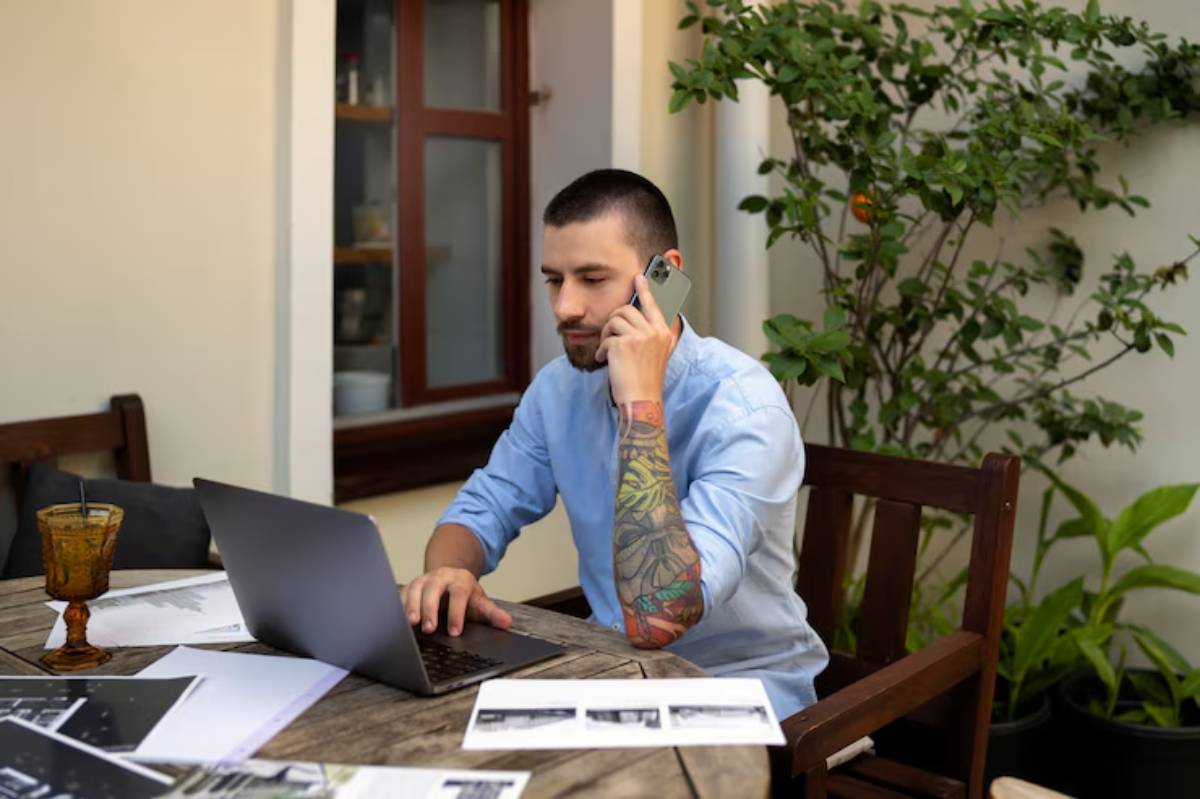The Health Blog

How to Practise Mindfulness During the Remote Workday
You’ve had a busy morning — back-to-back meetings, unread emails piling up, and a head that feels like it’s buzzing. You try to take a break, maybe scroll or make another cup of tea, but when you return, the stress is still there.
This is where mindfulness steps in — not as a luxury, but as a practical tool for managing your workday from within.
Mindfulness during remote work isn’t about sitting cross-legged in silence. It’s about developing a few simple, sustainable habits that help you pause, refocus, and ground yourself throughout the day.
In this guide, you’ll discover mindfulness techniques that support stress reduction and focus improvement, designed specifically for remote professionals navigating the blurred lines between home and work.
Understanding the Core: What Is Mindfulness and Why It Works at Home
Mindfulness is the practice of intentionally focusing your attention on the present moment, without judgment. It’s about tuning in rather than tuning out.
For remote workers, mindfulness helps restore balance in an environment where boundaries are soft, distractions are plenty, and mental clarity can easily slip away.
The Science Behind It
Research from Harvard University shows that people spend nearly 47% of their waking hours thinking about something other than what they’re doing. This “mind wandering” is directly linked to lower happiness and higher stress.
Mindfulness techniques train the brain to return to the present, decreasing cortisol (the stress hormone) and improving executive functions like memory and attention.
If you’re juggling multiple tasks and struggling to stay grounded, our article on minimising distractions in a home work environment can help lay the foundation for better mental space.
Quick Guide: Daily Mindfulness Practices for Remote Workers

- Begin your day with intention — Avoid jumping straight into work
- Use breathing techniques — Reset during stressful moments
- Anchor yourself with micro-pauses — One-minute body scans or stillness
- Single-task with awareness — Focus fully on one task at a time
- Step outside — Use nature as a mindfulness tool
- Close your day mindfully — Reflect and transition out of work mode
Step-by-Step Guide: How to Practise Mindfulness While Working Remotely
1. Start your day with a grounding ritual
Before opening your inbox, give yourself five minutes. Sit quietly. Breathe. Set a simple intention like “Today, I’ll stay calm in meetings” or “I will take breaks when needed.”
Pro Tip: Use a sticky note or screensaver as a visual reminder of your intention.
2. Practice mindful breathing
During high-stress moments, shift your attention to your breath:
- Inhale for 4 counts
- Hold for 2 counts
- Exhale for 6 counts
Repeat for two minutes.
Important: This triggers the parasympathetic nervous system, signalling to your body that you’re safe, and helping lower your stress response.
3. Use sensory anchors during tasks
Pick a task (e.g., writing an email), and bring full awareness to it. Feel your fingers on the keys. Notice your breath. Hear background sounds without judgment.
This practice strengthens attention and reduces mental noise.
4. Take one-minute resets
Schedule micro-pauses in your calendar. During each:
- Close your eyes
- Do a quick body scan from head to toe
- Let go of tension as you breathe
Warning: Don’t skip these because they feel “too short.” Small, repeated resets are more powerful than one big break.
5. Move with awareness
When you stand up, walk mindfully. Notice each step. If you stretch, pay attention to each movement, rather than doing it on autopilot.
Use case: David, a remote UX designer, started taking “mindful corridor walks” between tasks — just five steps and back. “It made me feel like my day had punctuation again,” he said.
6. Mindful wrap-up
At the end of your workday, pause before closing your laptop. Reflect:
- What went well?
- What do I want to release?
- What’s my intention for tomorrow?
Pro Tip: Try writing these down. This reflection helps mentally ‘clock out’ and reduces work-related rumination later in the evening.
Best Practices & Additional Insights
Integrate mindfulness into existing routines
You don’t need extra time — just better attention. Add awareness to things you already do:
- Waiting for coffee to brew
- Listening to a colleague
- Typing out meeting notes
- Washing your mug
Analogy: Think of your mind like a snow globe. When you stop shaking it, the flakes settle and clarity returns.
Make mindfulness social
Share a daily check-in thread with teammates:
- “Today I’m feeling…”
- “One thing I’ll focus on today…”
- “One thing I’ll let go of…”
This builds shared self-awareness and normalises mindful moments in team culture.
If you lead a team, explore effective communication in remote teams to support more mindful and clear interpersonal dynamics.
Keep it light
Mindfulness isn’t about perfection or strict meditation. Laugh during your check-in. Smile at your thoughts. Stay curious.
Use case: Priya, a copywriter, added a “mindfulness jar” on her desk. Each time she caught herself zoning out, she wrote down the moment. “It turned into a funny log of my inner life — and helped me catch patterns.”
FAQs
1. What is the best mindfulness technique for remote workers?
Start with mindful breathing. It’s simple, quick, and accessible anywhere — perfect for interrupting stress spirals during work.
2. How often should I practise mindfulness during the day?
Ideally, every 90–120 minutes. Even 1–2 minutes of focused awareness can help reset your mental state.
3. Do I need to meditate to be mindful?
Not at all. Meditation is one form, but you can practise mindfulness while walking, eating, writing, or listening.
4. Can mindfulness really help with work performance?
Yes. Studies show regular mindfulness improves memory, focus, emotional regulation, and decision-making — all key for productive remote work.
5. Is mindfulness suitable for introverts or neurodiverse individuals?
Absolutely. It can be especially helpful for managing sensory overload, anxiety, or executive function fatigue.
Bring Calm, Clarity, and Control to Your Remote Day

You don’t need hours or silence to benefit from mindfulness. Just one breath, one pause, one moment of awareness can transform your relationship with work.
By practising mindfulness techniques throughout your remote workday, you reclaim mental space and reduce the overwhelm that sneaks in from endless screens and tasks.
Try one thing today. A mindful breath before your next call. A focused walk at lunch. A calm end-of-day ritual.
Because when your mind is present, your work — and your wellbeing — follow.









